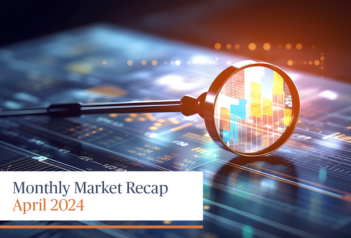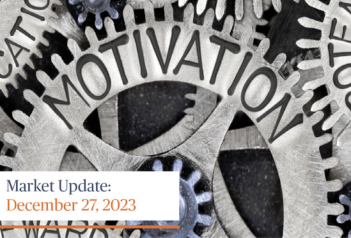Belgium. Canada. El Salvador. What do these countries have in common?
They are the birth places of our Research Team. I could have also included India earlier this year. Yet, all of us are Americans. As we approach November 3rd, regardless of your political affiliation, let’s exercise our citizenship right to vote.
While I do find the Electoral College process unique and somewhat strange, I am reminded we do not have a national election but a collection of fifty state elections. Over the next few weeks, we expect the market to continue to price in a higher level of uncertainty, as measured by implied volatility, around the outcome of the election.
Furthermore, depending on early voting and other factors, the results may not be known for several days potentially. The result itself does not seem to scare off investors. Wall Street has dissected most if not all the different tax and other campaign pledges by both candidates. Scenarios have been modeled by the size, timing, and actual implementation and their impacts on earnings and ultimately S&P 500 price targets.
By now, the summer focus of a possible binary post-election market reaction has ebbed. Certainly, the market will react, but the market has pivoted to a more medium and longer- term view.
As we have highlighted in previous webinars, the economic fundamentals always end up driving stock prices regardless of who ultimately wins the White House.
Our main view of this economic recovery is one of fits and starts. Depending on the industry you look at, the degree of improvement since March varies greatly. To use a cliché, the recovery looks like a “V”, a “W”, an “L”, and a “K” altogether:
Our “swoosh” shaped baseline scenario for the U.S. economy remains on track. While we do worry about the potential for another wave of cases derailing the recovery, high-frequency data such as mobility, restaurant reservations and jobless claims are holding steady. According to AlpineMacro, ten vaccines are in Stage 3 trials and the prognosis is for at least 25 million doses of an approved vaccine to be available for distribution by the middle of 2021.
Along with rising consumer confidence, retail sales rose for the fifth consecutive month in September, despite the lack of renewed fiscal stimulus. This reflects pent-up savings from the earlier government outlays, albeit offset by economic activity and employment far below long-term potential. Manufacturing and non-manufacturing purchasing managers indexes have stayed above the “boom-bust” 50 level for the past four months.
Finally, the housing boom continues to underpin household wealth as long as mortgage rates stay low.
Wall Street expects some fiscal stimulus package will happen because of the pandemic and, if Biden is elected, the resulting size of this stimulus would outweigh the drain from tax increases, adding 3-4 percentage points to GDP growth and ruling out a recession next year. According to Morgan Stanley, raising the corporate tax rate to about 28% would only reduce S&P 500 earnings by about 6%. A more worrisome long-term impact is the historic inverse relationship between the capital gains tax rate and the S&P 500 earnings multiple. We are doing some more research on this topic and look forward to updating you on our findings.
The economy is not yet in a self-sustaining liftoff phase and higher corporate taxes are bad for stocks. However, several offsetting factors will buy time for risk assets until the economy is on firmer ground and vaccine relief is near.
If you have any questions or want to have a conversation about the market or your portfolio, please contact Liz, Ed, Fred, Scott, Tyler, or myself. Your Sendero team is ready to help.
Best Regards,
Amaury de Barros Conti
210-930-9409
aconti@sendero.com


